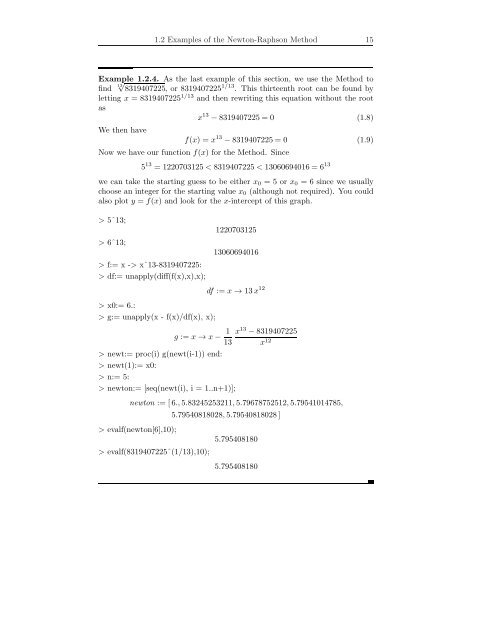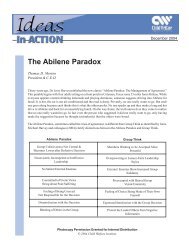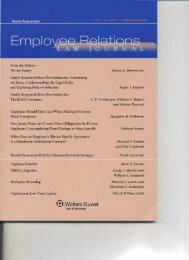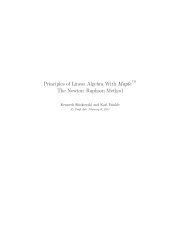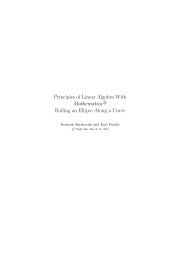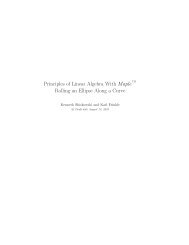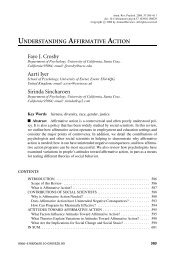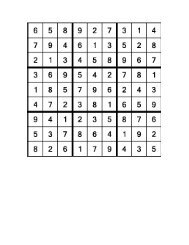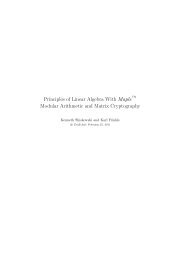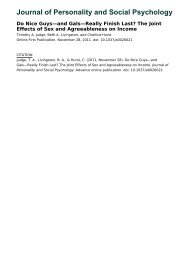Principles of Linear Algebra With Maple The NewtonâRaphson ...
Principles of Linear Algebra With Maple The NewtonâRaphson ...
Principles of Linear Algebra With Maple The NewtonâRaphson ...
- No tags were found...
Create successful ePaper yourself
Turn your PDF publications into a flip-book with our unique Google optimized e-Paper software.
1.2 Examples <strong>of</strong> the Newton-Raphson Method 15Example 1.2.4. As the last example <strong>of</strong> this section, we use the Method t<strong>of</strong>ind 13√ 8319407225, or 8319407225 1/13 . This thirteenth root can be found byletting x = 8319407225 1/13 and then rewriting this equation without the rootasx 13 −8319407225= 0 (1.8)We then havef(x) = x 13 −8319407225= 0 (1.9)Now we have our function f(x) for the Method. Since5 13 = 1220703125< 8319407225< 13060694016= 6 13we can take the starting guess to be either x 0 = 5 or x 0 = 6 since we usuallychoose an integer for the starting value x 0 (although not required). You couldalso plot y = f(x) and look for the x-intercept <strong>of</strong> this graph.> 5ˆ13;> 6ˆ13;> f:= x -> xˆ13-8319407225:> df:= unapply(diff(f(x),x),x);122070312513060694016> x0:= 6.:> g:= unapply(x - f(x)/df(x), x);df := x → 13x 12g := x → x− 1 x 13 −831940722513 x 12> newt:= proc(i) g(newt(i-1)) end:> newt(1):= x0:> n:= 5:> newton:= [seq(newt(i), i = 1..n+1)];newton := [6.,5.83245253211,5.79678752512,5.79541014785,5.79540818028,5.79540818028]> evalf(newton[6],10);> evalf(8319407225ˆ(1/13),10);5.7954081805.795408180


